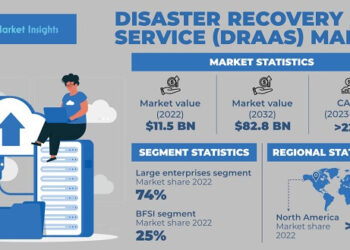
Clogged drains can be one of the most inconvenient and troublesome issues you might encounter in your home. However, with a little know-how, you can save both time and money when dealing with this common household problem. This article will guide you on how to unclog household drains using simple and effective methods.
1- Understanding the Causes of Drain Clogs – An In-Depth Analysis
Clogged drains are a common nuisance in every household. Understanding the root causes of drain clogs is crucial in not only addressing the issue when it occurs but also in taking preventive measures to reduce the likelihood of future clogs. In this in-depth analysis, we will explore the various causes of drain clogs and delve into the specifics of each, providing you with a comprehensive understanding of why these obstructions occur.
1.1 Toilet Paper and Paper Products
Toilet paper and paper products are frequent culprits in causing clogged drains, particularly in the bathroom. These products are designed to break down relatively quickly when exposed to water, but they can still create blockages when not used properly. Here’s how they contribute to clogs:
- Excessive Use: Using an excessive amount of toilet paper can overwhelm the drain and prevent it from effectively flushing waste away.
- Flushing Non-Flushable Items: Sometimes, individuals may flush non-flushable items like wet wipes, paper towels, or sanitary products down the toilet, which can lead to obstructions.
- Inefficient Plumbing: In older plumbing systems, toilet paper may not break down as efficiently, increasing the risk of clogs.
1.2 Hair Clumps
Hair, whether human or pet, can be a significant contributor to drain clogs. It has a knack for latching onto other items in the drain, leading to a slow buildup over time. Here are the key points to consider:
- Shower and Sink Drains: In the bathroom, hair tends to accumulate in shower and sink drains. When combined with soap residue and other debris, it creates a thick mass that obstructs water flow.
- Slow Accumulation: Hair clogs usually develop slowly over time, which means that by the time they cause noticeable issues, a substantial amount of hair may be present in the drain.
- Prevention: Installing drain filters or using a hair catcher in the shower can help prevent hair from going down the drain.
1.3 Foreign Objects and Non-Biodegradable Waste
Non-biodegradable items and foreign objects can enter your drains, leading to clogs. These objects often include:
- Plastic Items: Small plastic items, like toy parts or bottle caps, can accidentally find their way into drains and cause blockages.
- Food Particles: In the kitchen sink, food particles can accumulate over time and create obstructions. Even small bits of food can combine to form a barrier.
- Cardboard and Packaging: Cardboard packaging or similar materials can break down into pulp when soaked, leading to blockages.
- Unintentional Debris: Items that accidentally fall into drains, such as jewelry, can also create clogs.
1.4 Oil and Grease
Oil and grease from cooking are notorious for causing clogs in kitchen drains. These substances can flow down the drain while in liquid form but then solidify when they cool down. Here’s how they contribute to clogs:
- Buildup Over Time: As oil and grease are introduced to the drain, they slowly build up along the pipes’ walls. Over time, this buildup can lead to a complete obstruction.
- Solidification: When oil and grease cool, they congeal and solidify, creating a sticky mass that catches other debris.
- Prevention: Proper disposal of oil and grease is essential. Avoid pouring them down the sink; instead, collect and dispose of them in the trash.
1.5 Tree Roots
While the previous causes primarily relate to indoor plumbing, tree roots can pose a threat to outdoor drain systems. Tree roots are naturally drawn to water sources, which means that they can infiltrate and damage drain lines. Key points include:
- Cracked or Aging Pipes: Older or damaged pipes can develop cracks, allowing tree roots to penetrate the system.
- Slow Blockages: Tree roots usually enter pipes gradually, so you may experience a slow reduction in water flow.
- Professional Assistance: Addressing tree root issues often requires professional plumbing help, as the roots must be removed, and the damaged pipes repaired.
1.6 Corrosion and Mineral Buildup
Corrosion and mineral buildup are more common in older plumbing systems, particularly in regions with hard water. These issues can lead to reduced water flow and even clogs. The main factors to consider are:
- Pipe Deterioration: Over time, pipes can corrode, leading to smaller openings and rough surfaces that catch debris.
- Mineral Deposits: In hard water areas, mineral deposits can accumulate on the pipe’s inner surface, reducing the effective pipe diameter.
- Professional Inspection: Identifying and addressing corrosion and mineral buildup often require a professional inspection and repair of the plumbing system.
1.7 Combination of Factors
In many cases, drain clogs are not caused by a single factor but rather a combination of several issues. For example, hair buildup can be exacerbated by soap scum, grease, and foreign objects, creating a complex clog that is more challenging to remove.
Understanding the multifaceted nature of drain clogs is crucial in devising effective prevention and unclogging strategies.
Drain clogs can be caused by various factors, each with its own set of challenges and solutions. Understanding the causes of clogs allows you to take proactive measures to prevent them and empowers you to address clogs effectively when they occur. By recognizing the specific culprits behind clogs, you can tailor your preventive and unclogging efforts for a more efficient and hassle-free plumbing experience.

2- Unclogging Drains Using DIY Methods – A Comprehensive Analysis
Dealing with a clogged drain is a common household inconvenience, and knowing how to address it with do-it-yourself (DIY) methods can save you time and money. In this comprehensive analysis, we will explore a variety of DIY techniques for unclogging drains, along with the nuances of each method, so you can choose the one that suits your specific situation.
2.1 Plunger and Auger Method
The plunger and auger method is one of the most commonly used DIY techniques for unclogging drains. It is effective for various types of clogs, particularly those caused by organic materials and small debris. Here’s a detailed look at how to use this method:
- Plunger Technique:
- Select a plunger appropriate for the drain size. A cup plunger is suitable for sink and shower drains, while a flange plunger is better for toilets.
- Ensure that there is enough water in the sink or toilet bowl to create a good seal.
- Position the plunger over the drain, covering it entirely.
- Apply downward pressure on the plunger and create a tight seal.
- Push and pull the plunger in a rhythmic motion to dislodge the clog. For toilets, use a gentle but firm motion to avoid splashing.
- After a few repetitions, you should feel the clog loosen. Flush the drain with water to check if it’s cleared. Repeat if necessary.
- Auger Technique:
- If the plunger doesn’t work or the clog is further down the drain, you can use a drain auger (also known as a drain snake).
- Insert the auger into the drain opening and push it gently until you feel resistance.
- Rotate the auger handle to break through the clog or hook onto it.
- Slowly pull the auger out to remove the clog or debris.
- Flush the drain with water to ensure it’s clear.
The plunger and auger method is highly effective for minor clogs and should be the first approach you consider.
2.2 Chemical Drain Cleaners
Chemical drain cleaners can dissolve clogs and are readily available at most hardware stores. Here’s a closer look at how to use them:
- Boiling Water and Chemical Drain Cleaner:
- Start by pouring a pot of boiling water down the drain to soften the clog. Wait a few minutes.
- Follow the manufacturer’s instructions on the chemical drain cleaner product. Typically, you’ll need to measure the specified amount.
- Pour the chemical drain cleaner down the drain.
- Let it sit for the recommended time (usually around 15-30 minutes).
- Flush the drain with hot water to remove the dissolved clog.
- Using Commercial Drain Cleaning Products:
- There are various commercial drain cleaning products available. Follow the specific instructions on the product you purchase.
- Most products require you to pour them down the drain, wait, and then flush the drain with water.
2.3 Baking Soda and Vinegar Method
The combination of baking soda and vinegar can be an effective DIY solution for minor drain clogs. Here’s how to use this method:
- Start by pouring a pot of boiling water down the drain to help clear any loose debris.
- Pour one cup of baking soda into the drain.
- Follow the baking soda with one cup of white vinegar.
- Quickly cover the drain with a plug or cloth to prevent the mixture from escaping.
- Allow the mixture to sit for at least 15 minutes. You may hear fizzing and bubbling as the two substances react.
- After waiting, flush the drain with hot water to clear the clog.
This method is safe for most types of drains and can serve as a preventive maintenance step even when the drain isn’t clogged.
2.4 DIY Drain Snakes
If you don’t have a commercial drain auger, you can fashion a DIY drain snake using a wire hanger. Here’s how:
- Straighten a wire hanger and bend the tip to create a small hook.
- Insert the hooked end of the wire hanger into the drain and fish around for the clog.
- When you feel resistance, try to hook onto the clog and pull it out.
- Flush the drain with water to ensure it’s clear.
While not as effective as a dedicated drain auger, a DIY drain snake can help with minor clogs in shallow drains.
2.5 Hot Water Flushing
In some cases, a simple hot water flush can clear minor clogs. This method works best for clogs caused by grease or soap scum. Here’s how to do it:
- Boil a pot of water.
- Slowly pour the hot water down the drain in stages. Give the hot water time to work between each pour.
- The hot water can melt away and flush out grease and soap-related clogs.
2.6 DIY Cleaning Solutions
You can make your own drain cleaning solution using readily available household ingredients. Here’s how:
- For a mild clog: Mix half a cup of salt and half a cup of baking soda. Pour it down the drain, followed by boiling water.
- For a greasy clog: Mix equal parts vinegar and salt. Pour it down the drain and allow it to sit for a few hours or overnight. Rinse with hot water.
- For a foul-smelling drain: Combine half a cup of baking soda with a cup of vinegar. Pour this mixture down the drain and let it sit for at least an hour. Flush with hot water.

DIY methods can effectively address minor to moderate drain clogs. The choice of method depends on the type and severity of the clog, as well as the materials and tools you have at your disposal. By understanding the nuances of each method, you can confidently tackle drain clogs in your home and save both time and money while doing so. However, it’s important to remember that for more severe or recurring clogs, professional assistance may be required.
3- Preventing Future Clogs – A Comprehensive Analysis
Unclogging a drain can be a hassle, and it’s something most homeowners would prefer to avoid. The best way to deal with clogs is to prevent them from happening in the first place. In this comprehensive analysis, we will explore various strategies and techniques to prevent future drain clogs. By understanding and implementing these preventive measures, you can save time, money, and frustration.
3.1 Use Biodegradable Toilet Paper and Products
Toilet paper and paper products are frequent culprits when it comes to toilet clogs. Preventing these clogs starts with your choice of toilet paper and products:
- Opt for Biodegradable Toilet Paper: Choose toilet paper that is labeled as biodegradable. Biodegradable toilet paper is designed to break down more easily when exposed to water. It’s gentler on your plumbing and septic system.
- Avoid Excessive Use: Use toilet paper in moderation. Avoid overusing it, which can lead to a toilet bowl that is filled with paper and waste, increasing the risk of clogs.
- Educate Household Members: Make sure everyone in your household understands the importance of using toilet paper and products responsibly.
3.2 Install Drain Filters and Hair Catchers
In the bathroom, installing drain filters and hair catchers can be an effective way to prevent clogs caused by hair and debris:
- Sink and Shower Drains: Install drain filters in your bathroom sink and shower drains. These filters capture hair, soap scum, and other debris before they can enter your plumbing.
- Hair Catchers for the Shower: Consider using a hair catcher in your shower drain. These small, inexpensive devices are designed to catch hair before it goes down the drain.
- Regular Cleaning: Regularly clean and empty these filters and catchers to maintain their effectiveness.
3.3 Proper Disposal of Cooking Grease and Oil
Grease and oil from cooking are notorious for causing clogs in kitchen sinks. Preventing these clogs involves responsible disposal of cooking byproducts:
- Collect and Dispose of Grease: Instead of pouring hot cooking grease and oil down the sink, collect them in a container (e.g., an old jar or can) and dispose of them in the trash once they solidify.
- Scrape Dishes: Before washing dishes, scrape off excess grease and food particles into the trash to minimize the amount of residue entering your drain.
- Use a Strainer: Place a sink strainer over the drain to catch food particles before they enter the pipes.
3.4 Regular Drain Maintenance
Routine maintenance is crucial to preventing clogs and ensuring the longevity of your plumbing system. Consider these maintenance practices:
- Hot Water Flushing: Periodically flush your drains with hot water. This helps melt away grease and soap residue, preventing buildup.
- Homemade Cleaning Solutions: Use homemade cleaning solutions, such as a mixture of baking soda and vinegar, to clean your drains. This can help prevent minor clogs and maintain the pipes’ cleanliness.
- Professional Drain Cleaning: Consider scheduling professional drain cleaning services. A plumber can use specialized equipment to clear away any buildup that may lead to clogs.
- Regular Septic System Maintenance: If you have a septic system, regular maintenance is essential to prevent clogs. This includes regular pumping and inspections to ensure proper function.
3.5 Be Mindful of What Goes Down the Drain
One of the most effective preventive measures is being mindful of what goes down your drains. Educate yourself and your household members about what should and shouldn’t be flushed or washed down the drain:
- Toilet: Only human waste and toilet paper should be flushed. Avoid flushing items like wet wipes, paper towels, feminine hygiene products, or other non-flushable items.
- Kitchen Sink: Be cautious with what goes down the kitchen sink. Avoid letting food particles and grease enter the drain.
- Garbage Disposal: Use a garbage disposal for food scraps, but be selective about what you put down it. Avoid fibrous or stringy materials that can tangle and clog the disposal.
3.6 Tree Root Prevention
Outdoor drains, particularly those leading to septic systems, can be vulnerable to tree root intrusion. Prevent tree root clogs with these strategies:
- Plant Trees Wisely: When planting trees on your property, be mindful of their distance from drainage and sewer lines. Choose tree species with less aggressive root systems.
- Regular Tree Maintenance: Regularly trim and maintain trees and shrubs near your drain lines. This can help deter root intrusion.
- Professionally Address Root Issues: If you suspect tree root intrusion, consult with a professional plumber who can address the issue and make recommendations for preventing future problems.

Preventing future drain clogs is a proactive approach that can save you from the frustration, inconvenience, and expenses associated with clogged drains. By implementing these preventive measures and educating your household members, you can maintain a well-functioning plumbing system and enjoy the peace of mind that comes with fewer unexpected plumbing issues. Regular maintenance, responsible use of drains, and a mindful approach to what goes down them are key to maintaining clear and clog-free plumbing.
4- When to Call a Professional Plumber – A Detailed Analysis
While many drain clogs can be effectively resolved through do-it-yourself (DIY) methods, there are situations where calling a professional plumber is not just advisable but crucial. In this detailed analysis, we will explore the circumstances in which seeking professional plumbing assistance is the best course of action. Understanding when to call a plumber can save you time, prevent potential damage, and ensure that the issue is resolved correctly.
4.1 Severe or Repeated Clogs
One of the most compelling reasons to call a professional plumber is when you encounter severe or repeated drain clogs. Here are the key indicators that your clog may require professional attention:
- Frequent Clogs: If your drain clogs are a recurring problem and DIY methods seem to provide only temporary relief, it’s time to consult a professional. Frequent clogs can be a sign of an underlying issue within your plumbing system.
- Stubborn Clogs: When a clog is particularly stubborn and resists all attempts at removal, it suggests a more complex problem that may require professional tools and expertise.
- Multiple Clogs: If multiple drains in your home are clogging simultaneously or if several drains clog one after the other, it could be a sign of a blockage in your main sewer line, which is a serious issue that demands professional attention.
4.2 Water Leaks and Structural Damage
Water leaks and structural damage can occur as a result of a drain clog or as a separate plumbing issue. These issues should always prompt a call to a professional plumber:
- Water Leakage: If a clog is causing water to leak out of the pipes, resulting in damage to walls, floors, or ceilings, you should call a plumber immediately. Water leakage can lead to costly repairs if not addressed promptly.
- Structural Damage: When a drain clog causes structural damage to your plumbing system or the surrounding infrastructure, such as cracked pipes or compromised pipe joints, professional repairs are necessary to ensure a lasting fix.
4.3 No Improvement with DIY Methods
When DIY methods fail to clear a clog, or if the problem appears to worsen after your attempts to resolve it, it’s a clear sign that you should call a professional plumber. Continuing to apply DIY solutions in such cases may exacerbate the issue or lead to more extensive damage.
4.4 Foul Odors or Unpleasant Smells
Unpleasant smells emanating from your drains can be a sign of a deeper plumbing issue. These odors may be caused by a clog, a broken sewer line, or other problems within your plumbing system:
- Sewer Gas Odor: If you detect the distinct odor of sewer gas coming from your drains, it suggests a problem with your sewer line. Professional inspection and repairs are required to address this issue.
- Decomposing Material: Foul odors can also result from decomposing materials within your pipes, which may require professional cleaning or removal.
4.5 Slow Drainage Leading to Backups
When slow drainage progresses to the point of causing backups, it’s an urgent situation that necessitates professional intervention:
- Backflow: Backflow occurs when water or sewage flows back up into your fixtures or drains, typically resulting from a blockage or a problem in the main sewer line. Professional assistance is crucial to prevent further contamination and health risks.
- Slow Drainage: If multiple fixtures are experiencing slow drainage and you hear gurgling or bubbling sounds, it indicates a blockage deep within the plumbing system. Professional assessment is needed to identify and address the issue.
4.6 Old or Deteriorating Plumbing Systems
Older plumbing systems are more susceptible to issues like clogs, leaks, and structural damage. If your plumbing system is aging or showing signs of deterioration, professional plumbing maintenance is essential:
- Regular Inspections: Regular inspections by a professional plumber can identify potential problems early and prevent costly repairs or replacements in the long run.
- Upgrading Old Systems: In some cases, old plumbing systems may need to be upgraded to newer, more efficient systems to reduce the risk of recurring clogs and other issues.
4.7 Septic System Problems
If you have a septic system, any issues with your drains can be especially concerning, as they may indicate problems within the septic system itself:
- Overflow or Blockage: If your septic system is overflowing or experiencing blockages, it’s imperative to consult a professional plumber who specializes in septic systems.
- Regular Maintenance: Regular septic system maintenance is essential for preventing issues that can lead to clogs and backups. A professional septic system service can ensure your system remains in good working condition.

Knowing when to call a professional plumber is a critical aspect of maintaining your plumbing system and preventing costly damage and repairs. While many minor clogs can be resolved through DIY methods, recognizing the signs of a more significant problem that requires professional attention is essential. Promptly seeking professional help when necessary can save you from headaches, costly repairs, and the inconvenience of plumbing emergencies. A skilled plumber can assess the situation, provide effective solutions, and ensure the long-term functionality and safety of your plumbing system.
Conclusion
Clogged drains can be a nuisance, but by understanding the causes and applying unclogging methods, you can easily handle many situations on your own. Always implement preventive measures to protect your drainage system and keep it running smoothly.






















Discussion about this post